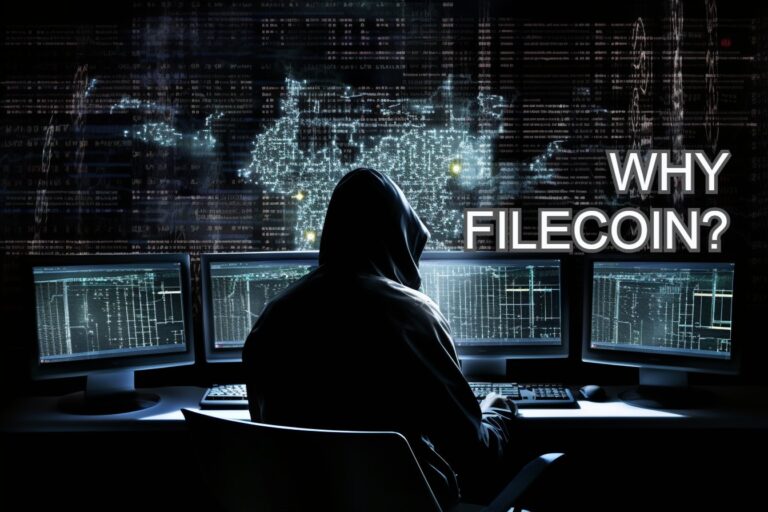In our increasingly data-driven world, the reliability and integrity of data are of paramount importance. Data storage and retrieval systems are designed with multiple layers of redundancy and error-checking mechanisms to ensure that the data remains intact and uncorrupted. However, a subtle and often overlooked threat, known as silent bit flips, can undermine even the most robust storage systems. In this blog post, we will explore the concept of silent bit flips, their potential consequences, and the remarkable role that Zero Knowledge proofs can play in detecting them.
The Silent Bit Flip
Silent bit flips are a rare but persistent issue that can silently corrupt stored data in electronic systems. These flips occur when a single bit within a data file or storage element spontaneously changes from a 0 to a 1, or vice versa, without any indication or notification to the system. The probability of a silent bit flip depends on various factors, including hardware quality, cosmic rays, and electromagnetic interference. Still, it becomes particularly concerning in large-scale data storage systems.
The 1E-15 Bit Error Rate
Consider the concept of a bit error rate (BER) to put the risk of silent bit flips into perspective. A BER of 1E-15 means that, on average, a one-bit error occurs for every 1,000,000,000,000,000 (a quadrillion) bits read. While this may seem negligible, in data storage, where vast amounts of data are routinely processed, it can lead to silent data corruption.
For example, if everything works perfectly with a BER of 1E-15, on average, every 900 terabytes (TB) read, an otherwise undetectable silent bit flip will be introduced. In practical terms, this means that even in high-quality storage systems, silent bit flips are not just theoretical anomalies but a genuine concern.
Hardware RAID and the Detection Challenge
One might assume that hardware RAID (Redundant Array of Independent Disks) systems, which are commonly used for data redundancy and fault tolerance, can detect and mitigate silent bit flips. However, this is not always the case. Traditional hardware RAID systems often rely on parity or mirroring schemes to detect and correct errors. Still, they may not be equipped to identify silent bit flips unless they result in a detectable parity error.
Zero Knowledge Proofs: The Silent Guardians
While hardware RAID may fall short in detecting silent bit flips, Zero Knowledge proofs emerge as a powerful solution. Zero Knowledge proofs are cryptographic protocols that enable one party to prove to another that they possess specific knowledge without revealing the actual knowledge itself. In the context of data integrity, Zero Knowledge proofs can be employed to verify the correctness of stored data without disclosing its content.
Here’s how it works: When data is read from storage, a Zero Knowledge proof is generated to confirm its integrity. If a silent bit flip has occurred, the proof will fail, indicating that the data has been corrupted. This approach provides a means of detecting silent bit flips and ensures data confidentiality.
Real-World Applications
Zero Knowledge proofs find applications in various domains, from blockchain to cloud computing. In blockchain, they are used to verify transactions without revealing sensitive information. In cloud computing, they can be applied to ensure the integrity of data stored in remote servers.
Conclusion
Silent bit flips may be rare, but their potential impact on data integrity cannot be ignored. In a world where data is king, safeguarding its integrity is paramount. While traditional hardware RAID systems may not be equipped to detect silent bit flips, Zero Knowledge proofs offer a robust solution to this subtle yet significant threat. As data storage systems grow in size and complexity, adopting cryptographic techniques like Zero Knowledge proofs becomes increasingly important in ensuring data remains accurate, reliable, and secure.
Further reading
- Tape is not dead
- Rethinking raid (Youtube video)
More about UBER:
From: OpenAI. (2023). ChatGPT (August 3 Version) [Large language model]. https://chat.openai.com
The concept of an undetected bit error rate (UBER) is specific to the storage industry, and there may not be widely available data or references that provide exact UBER values for various storage systems. UBER is often a parameter used by storage device manufacturers and vendors to characterize the reliability of their products, and specific values can vary depending on the hardware, error correction codes, and other factors.
A general overview of UBER
Hard Disk Drives (HDDs): HDDs typically have UBER values specified by the manufacturer. For example, a typical UBER value for enterprise-class HDDs might be around 1 in 10^15 bits read, which means that, on average, a one-bit error will go undetected for every 1,000,000,000,000,000 bits read.
Solid State Drives (SSDs): SSDs generally have a lower UBER than HDDs, which can vary between different SSD models. Enterprise-grade SSDs may have UBER values on the order of 1 in 10^17 bits read or better.
RAID Systems: The UBER of a RAID system depends on the UBER values of the individual drives and the RAID level used. RAID systems can offer improved data integrity through redundancy and error correction but are not immune to undetected errors.
Memory and ECC: In computer memory (RAM) context, Error-Correcting Code (ECC) memory is designed to detect and correct single-bit errors. The UBER for ECC memory is often much lower than non-ECC memory.
Data Centers and Data Integrity: Data centres and storage arrays in enterprise environments often use advanced error detection and correction techniques to minimize the risk of undetected bit errors. The specific UBER values for these systems can vary widely based on the hardware and redundancy configurations.
Please note that these values are approximate and can vary from one manufacturer and product to another. For precise UBER values for specific storage devices or systems, it is best to consult the product documentation or specifications provided by the manufacturer. Additionally, industry standards and best practices continue to evolve, so it’s essential to stay up to date with the latest information in the field of data storage and integrity.




